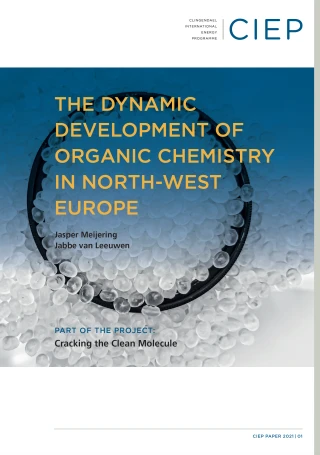
The Dynamic Development of Organic Chemistry in North-West Europe
- Publication:
- CIEP, January 2021
Summary
Part of the project: Cracking the Clean Molecule
Europe’s Antwerp, Rotterdam, Rhine, Ruhr Area (ARRRA) is home to the continent’s largest cluster for the transformation of hydrocarbons into organic chemical products. Apart from using energy to drive chemical processes, the chemicals sector requires hydrocarbons as material input. Currently, this ‘non-energetic use’ of feedstocks results in large amounts of fossil carbon atoms that are being embedded in chemical products and hence in large potential end-of-life (scope 3) emissions. Against the background of a society pushing towards net-zero emissions, this challenges the chemical industry to a potential third feedstock transition.
This paper explains the current chemicals ecosystem by combining the technical lens of organic chemistry and process technology with the lenses of historic, (geo)economic and (geo)political developments. First, the dynamics of change are laid out by reflection on the utilization of by-products from other sectors in the previous two feedstock transitions and exploration of the governmental, clustering, and market forces which shape the industry. Second, the coherency and high degree of integration in the resulting current chemical production ecosystem is elaborated on. Combined with analysis of the governance framework, the systems perspective taken in this paper shows the ARRRA chemicals ecosystem to be in ‘obliged symbiosis’, with the macro-level competitiveness of the cluster depending on the rationales behind lower-level choices and connections between sub-clusters.
Erratum: On 19 January 2021 we posted an updated version of the paper to correct an omission in Figure 3.





